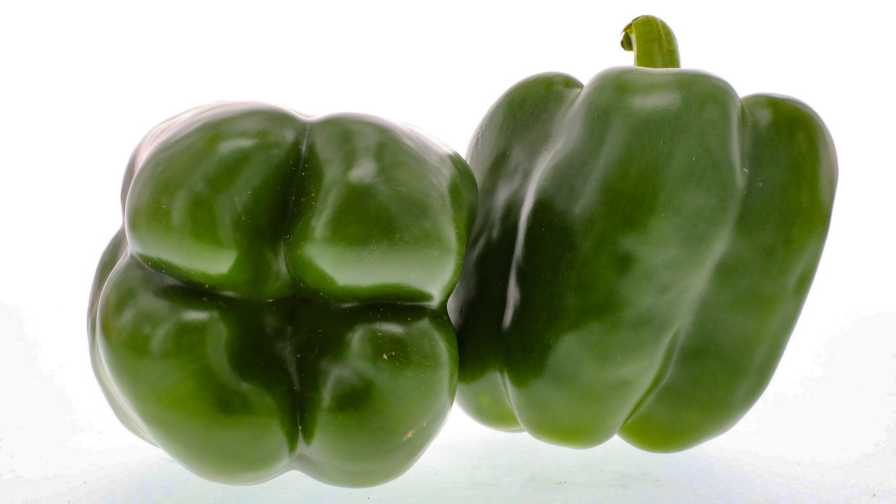How to Work with Genetics to Keep Vegetable Crops Healthy

Seminis will soon introduce ‘Tarpon,’ the first hybrid bell pepper that combines strong intermediate resistance to Phytophthora blight, high resistance to races 0-10 of bacterial leaf spot, and high fruit quality.
Photo courtesy of Seminis
Plant disease management can be overwhelming. But if growers and breeders collaborate and keep an open line of communication, it can lead to success for both.
For seed companies, grower input translates into breeding innovation, driven by consumer wants and grower needs. For growers who open their farms to breeders, they learn first-hand how well resistant varieties work for them.
How Growers and Breeders Collaborate
The grower/breeder partnership is pretty simple. A grower allows a breeder to do in-farm trialing and testing of its varieties in development. That allows breeders to evaluate a variety’s performance in real time, making adjustments as necessary in order to maximize value. And it gives the host grower a sense of how new varieties will perform for his climate.
Thomas Produce Company in Boca Raton, FL, is a great example of this symbiotic relationship, says its President, Norman Thomas.
“Nowadays plant varieties hold up better to pests, diseases, and mechanical harvesting. We have contended with pests like thrips and whiteflies in the past, which cost us capital to contain. Even though prices for our products have increased, input prices have outpaced them. So it is important to find our edge in order to keep farming in the future,” Thomas explains.
Thomas’ relationship with his seed breeder gives him that edge. It offers him the opportunity of not going through crop hassles alone. For more than three decades Thomas has conducted trials on his farms.
“We are always running trials in our farms to see what new varieties breeders are developing,” he says.
Doing so allows him to choose the best Seedway and HM Clause varieties for his production catalog, Thomas says. Not only does he know which varieties are best for him, but Thomas Farms has first dibs on successful products.
“The Thomas Group is an amazing development partner with us,” says Leo Camelo, Southeast Business Manager for HM Clause. “If you think of the ways we find new varieties with disease packages, we are actually doing that inside their farms. So it’s like they are running an experimental research farm.”
Camelo adds that this symbiotic relationship allows the grower to benefit from access to new varieties, while the seed breeder benefits from data gathered in the farm.

Several seed breeders are working on breeding resistance to the emerging disease tomato brown rugose fruit virus (ToBRFV) in tomatoes.
Photo courtesy of Sakata
Get the Most from Resistant Varieties
Not everyone can act as a trial site for seed companies. So how can you truly maximize their crops’ genetic potential? By staying ahead of pests and diseases.
There may be no such thing as full disease and pest immunity. But genetic resistance is growers’ first line of defense. But it doesn’t guarantee a disease-free, successful growing season, especially if proper precautionary measures were not implemented from the start.
“Some viruses, such as the newly emerging tomato brown rugose fruit virus (ToBRFV), can be spread in a field and greenhouse mechanically through people or equipment,” says David Wolff, Senior Plant Breeder of Sakata.
Another tip is to apply pest controls prior to fruit set.
“The bacterial issue likely started long before on the leaves,” says Ian Jenkins from Rispens Seeds. “But because harvest was still many weeks away, the issue was either ignored or tending to the crop was not a priority.”
Steve Wiley, General Manager/COO of American Takii, supports the importance of proactive measures to decrease susceptibility to diseases in cabbage.
“[Cabbage] has fairly high levels of resistance to black rot. But if the growers haven’t controlled weeds or crop residues that harbor such diseases, they can end up with black rot.”
High tunnel crops require that balance of resistant varieties and managing crops, too, says Josh Kirschenbaum, Accounts Manager for PanAmerican Seed Company. Humidity in high tunnel environments exacerbates root zone diseases on tomatoes, such as tobacco mosaic virus (TMV), as well as pests like nematodes.
The Race Against New Strains
One of the biggest challenges breeders face isn’t genetic drift, says Dr. Heather Olson, Technology Development Rep, Georgia, for Bayer. It’s the introduction of new pathogens or strains.
Breeding resistance takes time and energy. It can take breeders anywhere between five to eight years to develop a new spinach variety, says Rick Falconer, Managing Director of Rijk Zwaan USA. And that’s a problem.
“Over the last two decades, we have seen new novel races of downy mildew develop every two to three years. Statistics are not in our favor.”
Scott Williams, Director of Breeding at HM Clause, echoes this sentiment.
“In the past decade, there has been the emergence of new strains or races of existing pathogens which seem to be increasing at an alarming rate,” he says.
This uptick in new strains or races of existing pathogens makes working with growers vital to successful breeding. It allows seed companies to see how new varieties perform in real-world settings with constantly evolving diseases and pests.
American Takii’s Wiley says when a seed company is afforded the opportunity to conduct seed trials in a grower’s field, evaluation outcomes help drive innovation in the industry.
“Growers who engage in active trial programs with their seed suppliers are the ones that prepare themselves the best for any kind of outcome,” Wiley says.
Modern Tools Create Better Crops
Seed companies are trying their best to breed disease-resistant varieties that will translate into marketable, healthy yields for the grower.
Gene stacking technology now allows breeders to reduce the probability of a pathogen overcoming genetic resistance bred into a seed variety, says Dr. Ryan Walker, Global Breeding Lead LSV for Syngenta.
Gene editing is another promising technique that can “create truly novel resistance genes that haven’t yet occurred in nature,” he says.
Other techniques include looking for highly resistant varieties in the wild whose genetic material can be domesticated into consumer driven varieties. The Hazera team, for example, has been able to introduce downy mildew resistance from a species of Allium roylei into commercially available onion hybrids. And they retain storage and yield qualities.










